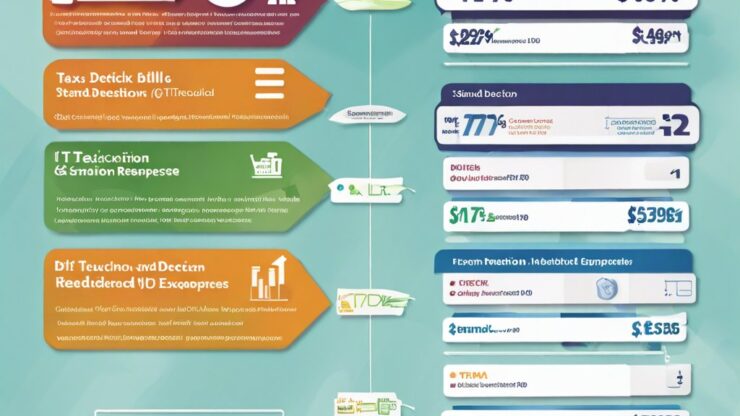As the tax season approaches, many taxpayers are faced with a crucial decision: should they take the standard deduction or opt for itemized deductions? Understanding the differences between these two options can significantly impact your tax return and overall financial health. This article delves into the nuances of standard and itemized deductions, helping you make an informed choice.
The standard deduction is a fixed dollar amount that reduces your taxable income. It is straightforward and often a favorable option for many taxpayers due to its simplicity. For the tax year 2023, the standard deduction amounts are $13,850 for single filers and $27,700 for married couples filing jointly. The allure of the standard deduction lies in its ease of use; no need for extensive documentation or detailed record-keeping.
Moreover, the standard deduction is adjusted annually for inflation, ensuring it remains relevant in the evolving economic landscape. This means taxpayers can rely on a consistent reduction in their taxable income without the hassle of itemizing expenses.
In contrast, itemized deductions allow taxpayers to deduct specific expenses from their taxable income. This route can be more beneficial for individuals with significant deductible expenses, such as mortgage interest, medical expenses, and charitable contributions. However, itemizing can require more effort, including maintaining meticulous records and receipts.
To help you assess whether to take the standard deduction or itemize, consider the following list of common itemized deductions:
- Mortgage Interest
- Property Taxes
- Medical and Dental Expenses
- Charitable Contributions
- Unreimbursed Business Expenses
Each of these deductions has specific eligibility criteria and limitations, which can complicate the decision-making process. For many, the choice hinges on whether their total itemized deductions exceed the standard deduction amounts.
Ultimately, the decision between the standard deduction and itemizing hinges on your unique financial circumstances. If your total itemizable expenses surpass the standard deduction threshold, itemizing may yield greater tax benefits. However, for the majority of taxpayers, particularly those with fewer deductible expenses, the standard deduction offers simplicity and ease.
To determine the best option for you, it is advisable to calculate both scenarios. Consider using tax software or consulting a tax professional to optimize your deductions and minimize your tax liability. By weighing your options carefully, you can ensure that you make the most financially advantageous decision come tax season.
Disclaimer
This article has been created or edited with the support of artificial intelligence and is for informational purposes only. The information provided should not be considered investment advice. Please seek the support of a professional advisor before making any investment decisions.






